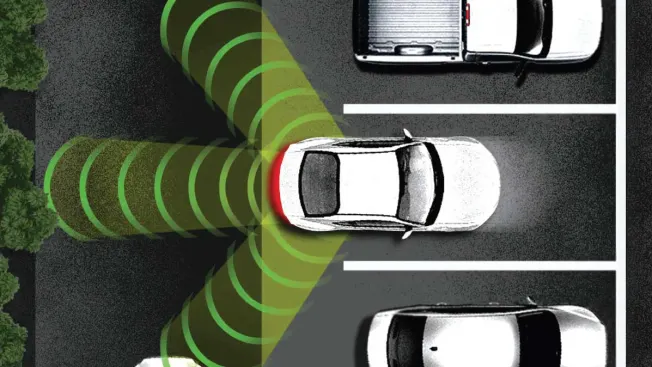Introduction: The Evolution of Vehicle Safety Technology
In the ever-evolving landscape of automotive technology, safety has taken center stage. From the introduction of seatbelts to the advent of airbags, each innovation has been a leap forward in protecting drivers and passengers. In recent years, the focus has shifted to advanced driver-assistance systems (ADAS), with the back up camera and traffic alert systems leading the charge. These tools are no longer optional add-ons but have become essential for modern driving, offering a layer of safety that was once unimaginable. As we delve into the intricacies of these technologies, it becomes clear how integral they are to the future of road safety.
Understanding the Importance of a Back Up Camera
Its importance lies in its ability to provide a clear, real-time view of the area directly behind the vehicle—a space notoriously difficult to monitor through mirrors alone. This technology addresses a critical gap in driver visibility, allowing for safer and more precise maneuvers, particularly in tight spaces or congested environments. Whether you’re backing out of a driveway or navigating a crowded parking lot, the back up camera is your eyes in the rear, reducing the risk of accidents and ensuring peace of mind.
How Back Up Cameras Have Revolutionized Driving Safety
By virtually eliminating the driver’s rear blind spot, these cameras have dramatically reduced the incidence of “backover” accidents—collisions that occur when a vehicle is reversing and the driver fails to see a person, object, or vehicle in the path. This is especially crucial in preventing accidents involving small children and pets, who are often difficult to spot through rearview mirrors alone. The introduction of this technology has led to a significant decline in such incidents, marking a revolution in how we approach safety in everyday driving.
The Growing Demand for Traffic Alert Systems
As urban environments become increasingly congested, the demand for traffic alert systems has surged. These systems, designed to monitor and alert drivers of approaching vehicles or obstacles, are becoming a staple in modern cars.
What is a Traffic Alert System?
At its core, a traffic alert system is a network of sensors and cameras integrated into the vehicle’s structure, designed to detect and warn the driver of oncoming traffic, pedestrians, or obstacles. By providing real-time alerts—typically through visual or auditory signals—the system acts as an additional set of eyes, helping the driver avoid collisions that could result from unseen hazards.
Why Traffic Alerts are Essential for Modern Drivers
In today’s fast-paced driving environment, the ability to react quickly to unexpected situations is crucial. Traffic alert systems are essential because they bridge the gap between human reaction time and the unpredictable nature of road conditions. They offer a proactive approach to safety, notifying drivers of potential dangers before they can result in an accident.
The Synergy of Back Up Cameras and Traffic Alerts
The combination of back up cameras and traffic alert systems creates a synergistic effect, enhancing vehicle safety beyond the sum of their individual parts. While the back up camera offers a clear view of what’s directly behind the vehicle, the traffic alert system monitors the sides and rear for approaching hazards. Together, they provide a comprehensive safety net that addresses multiple blind spots, making reversing and maneuvering in traffic significantly safer.
How These Two Technologies Work Together for Safer Driving
When integrated, back up cameras and traffic alerts offer a seamless flow of information to the driver. As you reverse, the camera provides a visual feed, while the traffic alert system monitors for any moving objects that might not be immediately visible in the camera’s field of view. If a potential hazard is detected, the system issues an alert, prompting the driver to take corrective action.
Top Benefits of Using a Back Up Camera with Traffic Alert
Enhanced Visibility: See More, React Faster
One of the most significant benefits of using a back up camera with traffic alert is the enhanced visibility it provides. These systems extend your field of vision beyond what mirrors can offer, allowing you to see more of your surroundings and react more quickly to any potential hazards. This is particularly beneficial in crowded areas, where obstacles can appear suddenly.
Reducing Blind Spots: No More Hidden Surprises
Blind spots have long been a challenge for drivers, leading to numerous accidents each year. By combining the visual clarity of a back up camera with the proactive alerts of a traffic system, these technologies effectively eliminate blind spots, ensuring that there are no hidden surprises when you’re on the road. This leads to a safer, more confident driving experience.
Collision Avoidance: How Traffic Alerts Keep You Safe
By providing timely warnings, traffic alert systems give drivers the information they need to avoid collisions, protecting both the vehicle and its occupants.
The Technology Behind Back Up Cameras
Understanding Wide-Angle Lenses and Image Sensors
Wide-angle lenses provide a broader field of view, allowing drivers to see more of what’s behind them. High-quality image sensors, on the other hand, ensure that the video feed is clear and detailed, even in challenging lighting conditions. Together, these components create a reliable and effective safety tool.
Night Vision Capabilities: Safe Driving After Dark
Driving at night presents unique challenges, particularly when reversing. These systems use infrared technology to illuminate the area behind the vehicle, ensuring that drivers can see clearly even in the dark. This feature is crucial for maintaining safety when driving after sunset.
Advanced Features: Parking Guides and Object Detection
Modern back up cameras come equipped with a range of advanced features designed to make driving safer and more convenient. Parking guides, for example, overlay trajectory lines on the video feed, helping drivers accurately judge distances and angles when parking.
The Mechanics of Traffic Alert Systems
How Radar and Sensors Detect Oncoming Traffic
Traffic alert systems rely on a combination of radar and sensors to detect oncoming traffic and obstacles. These components constantly scan the vehicle’s surroundings, monitoring for any potential hazards. When an object is detected, the system calculates its speed and distance, issuing an alert if there’s a risk of collision. This technology is crucial for preventing accidents in situations where the driver’s visibility is limited.
Understanding Rear Cross Traffic Alerts: Your Extra Set of Eyes
Rear cross traffic alerts are a specific type of traffic alert system designed to assist drivers when reversing out of parking spaces or driveways. These systems use sensors to monitor the area behind the vehicle for approaching traffic. If a vehicle or pedestrian is detected, the system issues a warning, allowing the driver to stop and avoid a collision. This feature is particularly useful in busy parking lots, where visibility is often compromised.
Integration with Other Safety Features: Lane Departure and More
This integration creates a comprehensive safety network that addresses multiple aspects of driving, from reversing to lane changes.
Choosing the Right Back Up Camera with Traffic Alert
What to Look for in a Back Up Camera: Key Features
When choosing a back up camera, there are several key features to consider. High-resolution imaging is essential for clear visibility, while a wide field of view ensures that you can see more of what’s behind you. Night vision capabilities are also important for safe driving in low-light conditions. Additionally, consider whether the camera includes advanced features like parking guides and object detection, which can further enhance safety.
Top Traffic Alert Systems: Which One is Right for You?
Selecting the right traffic alert system depends on your specific needs and driving habits. Some systems are designed for urban environments, with a focus on detecting pedestrians and vehicles in crowded areas. Others are better suited for highway driving, with advanced features like blind spot monitoring and lane departure warnings. Consider the type of driving you do most often and choose a system that aligns with those needs.
Comparing Popular Models: Features, Performance, and Price
When comparing models, it’s important to consider how each system’s features align with your driving needs. For example, if you frequently drive at night, prioritize a system with strong night vision capabilities. Additionally, consider the overall cost of the system, including installation and any additional features you may need.

